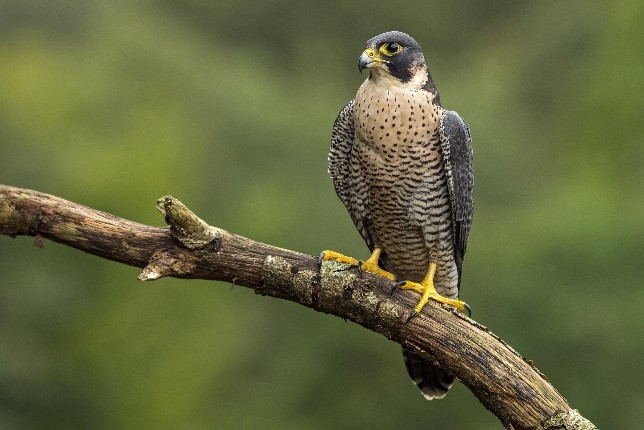Peregrine Falcon: A Guide to Its History and Uses
-

- by Admin
- Aug 26, 2024

Imagine diving through the air at over 320 km/h (200 mph) with your keen eyes focused on your target. Then stretching out your talons, you snatch up your prey. This is how the peregrine falcon hunts.The peregrine falcon is known for its high-speed diving skills. In fact, when diving, the peregrine falcon is the fastest animal on Earth. The fastest measured speed of a peregrine falcon is 389 km/h (242 mph)!
Physically, peregrine falcons are grayish through their back, wings, and head, and their bellies are white. They have black eyes with a yellow circle around them, yellow and gray beaks, and yellow legs.
Peregrine falcons are between 30-50 cm (12-20 in.) long from beak to tail with a wingspan of 80-120 cm (30-48 in.).
Well-adapted to live in many locations, peregrine falcons can live in cities, deserts, mountains, forests, and grasslands. They can be found on every continent except Antarctica.
They can also live in hot or cold climates. Some peregrine falcons who live in colder climates will migrate in winter and return when it is mating season.
What Peregrine Falcons Eat
Peregrine falcons are a kind of raptor, or bird of prey. That means they eat other animals. In general, peregrine falcons hunt for other birds. They look for mid-size birds in flight, like ducks, pigeons, and gulls.
They swoop down and clutch the bird in their talons or knock it from the sky. They may eat while flying or land somewhere safe to eat.
Peregrine Falcon Reproduction
Mating season begins with courtship displays. Males will fly in high circles and swoop into dives. Males will also bring food to females. If the courtship is successful, the female will lay 3-4 eggs.
Peregrine falcons don’t build nests, but instead they dig out scrapes on a cliffside or use a ledge on the side of a building to lay their eggs.
The female will incubate the eggs for a little over a month. Sometimes the male also incubates the eggs, but he spends most of his time bringing food back to the nest.
Once the chicks hatch, both parents provide food to the babies. The chicks will be ready to fledge at around 5-6 weeks. After their first flight, they will stay with their parents for a few months to learn survival and hunting skills.
Young peregrine falcons may fall prey to great horned owls, but adult peregrine falcons have no natural predators. They live up to 15 years in the wild.
1 Comments:
Leave a Reply